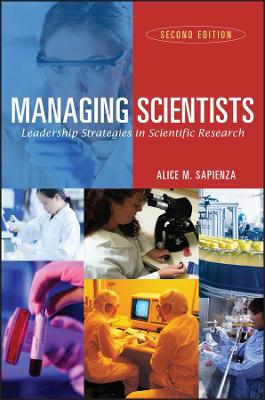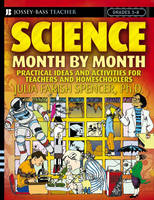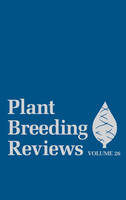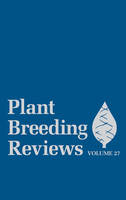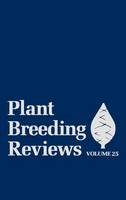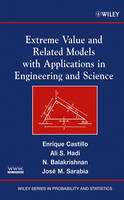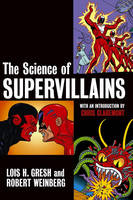Make Your Mark in Science
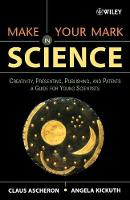 -15%
portes grátis
-15%
portes grátis
Make Your Mark in Science
Creativity, Presenting, Publishing, and Patents, A Guide for Young Scientists
Kickuth, Angela; Ascheron, Claus
John Wiley & Sons Inc
02/2005
256
Mole
Inglês
9780471657330
15 a 20 dias
338
1.1 What Does It Take to Be a Successful Scientist?
1.2 Creativity.
1.3 Presenting.
1.4 Publishing and Electronic Publishing.
1.5 Patents.
2. Scientific Creativity.
2.1 What is Creativity?
2.2 Creativity in Science.
2.3 Prerequisites for Creative Work.
2.4 Personal Working Conditions.
2.5 Group Creativity: Cooperation and Competition.
2.6 Intelligence and Creativity.
2.7 Scientific Creativity and Productivity Worldwide.
3. Scientific Presenting.
3.1 Planning a Presentation.
3.2 Visual Aids.
3.3 Preparing Slides.
3.4 Practicing Before the Event.
3.5 Delivering a Talk.
3.6 Surviving the Discussion.
3.7 The Art of Asking Questions.
3.8 Poster Presentations.
3.9 Some Tips for Chairing Meetings.
3.10 Dos and Don'ts.
4. The Culture and Ethics of Scientific Publishing.
4.1 Purposes of Scientific Publishing.
4.2 Types of Publications.
4.3 A Few Words About Ethics.
5. Writing and Publishing Your Own Paper.
5.1 Planning and Preparation.
5.2 Style of Writing.
5.3 Structure of a Scientific Paper.
5.4 Formal Aspects of Manuscript Preparation.
5.5 Submission, Refereeing, Revisions.
5.6 Writing for Profit?
5.7 Dos and Don'ts.
6. Electronic Publishing.
6.1 Milestones in the Development of Electronic Publishing.
6.2 Today's Electronic Media and Products.
6.3 Use and Benefits of Online Publications.
6.4 The Roles of the Publisher.
6.5 Problems and Potential Pitfalls.
6.6 Future Prospects, Near and Medium-Term.
6.7 Open Access Publications.
7. Patents.
7.1 Introduction.
7.2 What Is a Patent?
7.3 What Can and Can't Be Patented?
7.4 Conditions for Patentability.
7.5 Who Should Apply? Patent Ownership.
7.6 Before You Apply.
7.7 Patent Application Procedure: Example of European Patent Office.
7.8 The Patent Examination Process (EPO).
7.9 Differences Between US and European Patents.
7.10 Costs of Patents.
7.11 Getting Assistance.
7.12 A Little Relief.
1.1 What Does It Take to Be a Successful Scientist?
1.2 Creativity.
1.3 Presenting.
1.4 Publishing and Electronic Publishing.
1.5 Patents.
2. Scientific Creativity.
2.1 What is Creativity?
2.2 Creativity in Science.
2.3 Prerequisites for Creative Work.
2.4 Personal Working Conditions.
2.5 Group Creativity: Cooperation and Competition.
2.6 Intelligence and Creativity.
2.7 Scientific Creativity and Productivity Worldwide.
3. Scientific Presenting.
3.1 Planning a Presentation.
3.2 Visual Aids.
3.3 Preparing Slides.
3.4 Practicing Before the Event.
3.5 Delivering a Talk.
3.6 Surviving the Discussion.
3.7 The Art of Asking Questions.
3.8 Poster Presentations.
3.9 Some Tips for Chairing Meetings.
3.10 Dos and Don'ts.
4. The Culture and Ethics of Scientific Publishing.
4.1 Purposes of Scientific Publishing.
4.2 Types of Publications.
4.3 A Few Words About Ethics.
5. Writing and Publishing Your Own Paper.
5.1 Planning and Preparation.
5.2 Style of Writing.
5.3 Structure of a Scientific Paper.
5.4 Formal Aspects of Manuscript Preparation.
5.5 Submission, Refereeing, Revisions.
5.6 Writing for Profit?
5.7 Dos and Don'ts.
6. Electronic Publishing.
6.1 Milestones in the Development of Electronic Publishing.
6.2 Today's Electronic Media and Products.
6.3 Use and Benefits of Online Publications.
6.4 The Roles of the Publisher.
6.5 Problems and Potential Pitfalls.
6.6 Future Prospects, Near and Medium-Term.
6.7 Open Access Publications.
7. Patents.
7.1 Introduction.
7.2 What Is a Patent?
7.3 What Can and Can't Be Patented?
7.4 Conditions for Patentability.
7.5 Who Should Apply? Patent Ownership.
7.6 Before You Apply.
7.7 Patent Application Procedure: Example of European Patent Office.
7.8 The Patent Examination Process (EPO).
7.9 Differences Between US and European Patents.
7.10 Costs of Patents.
7.11 Getting Assistance.
7.12 A Little Relief.


